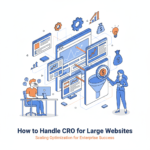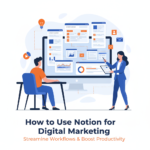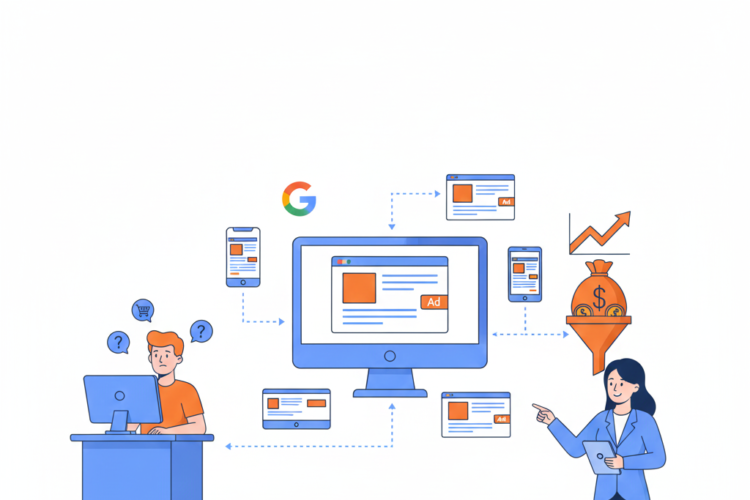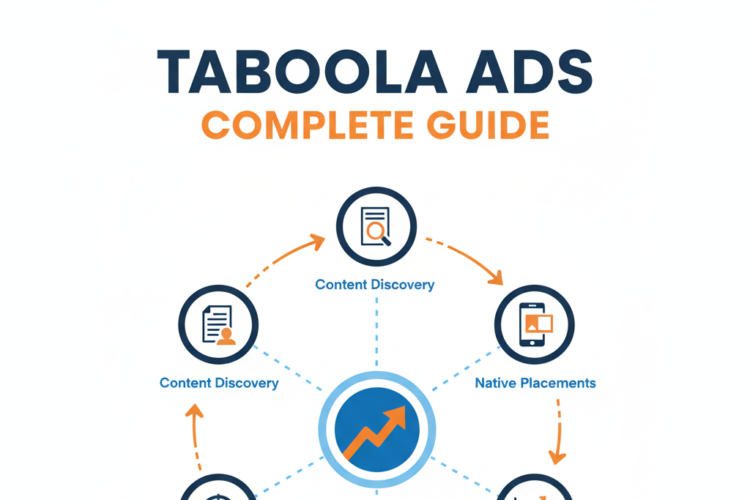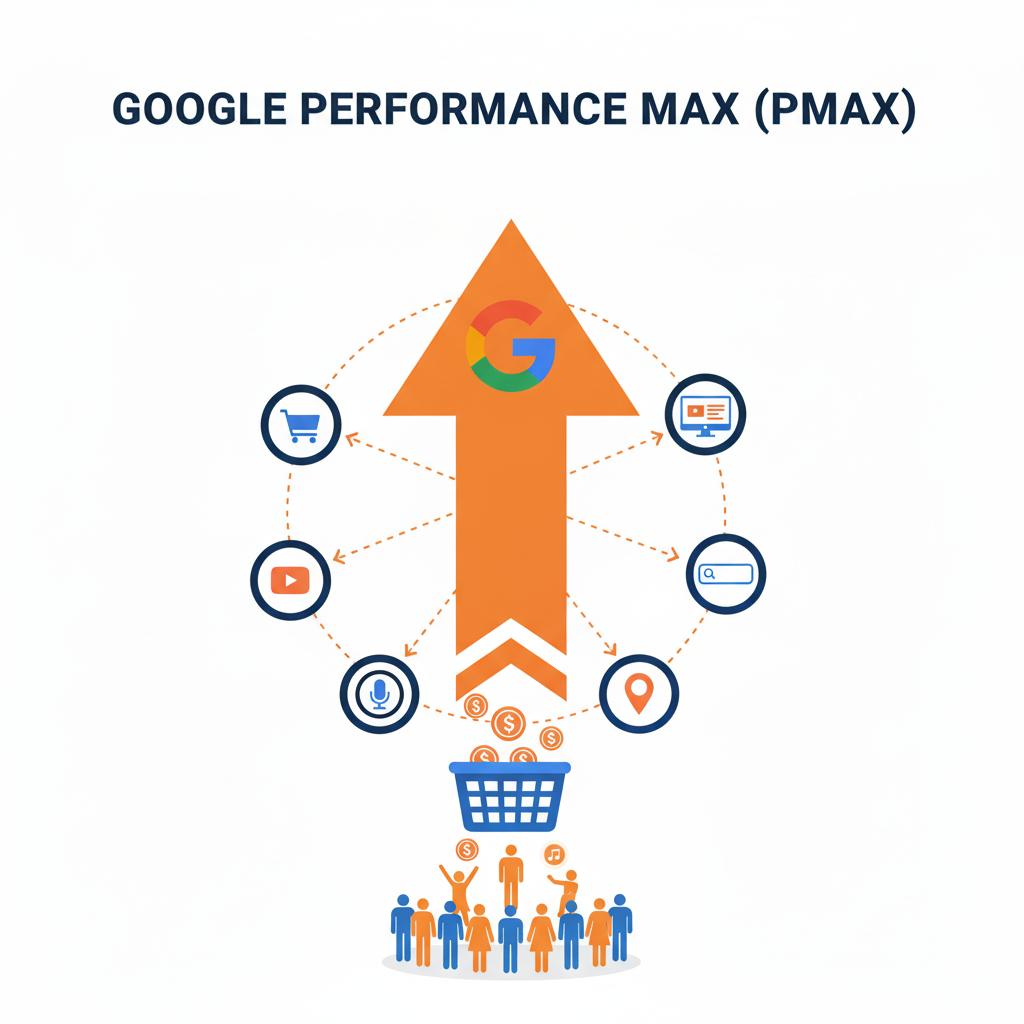
Google Performance Max (PMax): Everything You Need to Know in 2025
A Complete Guide for Marketers, Advertisers, and Business Owners
📌 Table of Contents
Introduction: What is Google Performance Max?
Why Google Created Performance Max
Performance Max vs Traditional Campaign Types
How Performance Max Campaigns Work
Where Your Ads Show
Key Features of Performance Max
PMax Campaign Structure
Assets Required to Launch a PMax Campaign
Audience Signals and Targeting
Smart Bidding and Machine Learning
Insights & Reporting
Best Use Cases for Performance Max
PMax for eCommerce (Google Merchant Center Integration)
Optimizing Performance Max Campaigns
Common Pitfalls to Avoid
Performance Max for Lead Generation
Advanced Strategies & Tips
Integration with GA4, YouTube, and CRM
Future of Performance Max
Final Thoughts & Checklist
1. 🧠 Introduction: What is Google Performance Max?
Performance Max (PMax) is a goal-based, all-in-one campaign type that allows advertisers to access all of Google Ads inventory from a single campaign. It uses machine learning, automation, and creative assets to deliver personalized ads across:
Google Search
Display Network
YouTube
Gmail
Discover
Maps
Launched in 2021 and now a central part of Google Ads in 2025, PMax is designed for maximum performance with minimal manual setup.
2. 💡 Why Google Created Performance Max
Simplify campaign management
Use AI to improve ad delivery
Maximize conversions across channels
Reduce reliance on manual targeting and optimization
Adapt to privacy changes (cookie deprecation, data gaps)
3. ⚖️ Performance Max vs Traditional Campaigns
| Feature | Performance Max | Traditional Campaigns |
|---|---|---|
| Inventory | All Google properties | One per campaign |
| Bidding | Smart Bidding only | Manual or Smart |
| Targeting | Automated + audience signals | Manual |
| Optimization | Fully AI-driven | Manual or assisted |
| Ads | Responsive formats (assets) | Fixed format per network |
| Data Use | 1st party + Google signals | Limited signals |
| Reporting | Limited asset insights | Detailed per-ad insights |
| Control | Less manual control | More granular control |
4. ⚙️ How Performance Max Campaigns Work
Performance Max campaigns use:
Smart bidding strategies (maximize conversions/ROAS)
Asset groups: Combine headlines, images, videos, CTAs
Audience signals: Suggest who to target
Machine learning: Google’s AI delivers the right ad to the right user across platforms
Conversion goals: Campaigns are optimized to your chosen goal
Once you provide the creative assets and signals, Google does the rest.
5. 📍 Where Your Ads Show
Search Network (branded + non-branded queries)
YouTube (in-stream, discovery, shorts)
Google Display Network
Gmail promotions tab
Discover feed (on mobile)
Google Maps (local campaigns)
Shopping ads (via Merchant Center)
No other campaign type has this level of reach.
6. ⭐ Key Features of Performance Max
Access to all Google Ads inventory
Goal-based setup (leads, sales, visits)
Use of first-party data
Automated audience targeting and creatives
Real-time machine learning optimization
Creative testing (Google evaluates best combinations)
Insights tab for understanding performance drivers
Search Term Insights and Audience Insights
Custom rules and exclusions (e.g., branded search control)
7. 📐 PMax Campaign Structure
| Element | Description |
|---|---|
| Asset Group | Bundle of creatives, headlines, descriptions, images, videos, etc. |
| Audience Signal | Hint to help Google jumpstart learning |
| Conversion Goal | What you want to achieve (sales, leads) |
| Geo & Language | Choose countries/regions |
| Budget & Bidding | Choose Smart Bidding strategy |
| Product Feed (eCom) | Automatically pulls in product data |
| Extensions | Callouts, sitelinks, pricing, lead forms |
8. 🧰 Assets Required to Launch a PMax Campaign
Required:
Final URL (landing page)
Headlines (3–5)
Descriptions (2–5)
Business name
Images (at least 3, including 1200×1200 and 1200×628)
Logo
1 Video (or Google auto-generates one)
Optional but Recommended:
Call-to-action (CTA)
Ad extensions (sitelinks, lead forms, promotions)
Merchant Center Feed (for eCommerce)
9. 🎯 Audience Signals and Targeting
While PMax uses automation, you can guide the AI with audience signals such as:
Custom segments (keywords, URLs, apps)
Website visitors (via GA4 or tags)
Customer match (email list uploads)
In-market and affinity audiences
Lookalikes from conversions
Google uses these to accelerate performance, but still expands beyond them.
10. 🤖 Smart Bidding and Machine Learning
Bidding strategies:
Maximize Conversions
Maximize Conversion Value
Target CPA (Cost per Acquisition)
Target ROAS (Return on Ad Spend)
Machine learning analyzes:
User intent
Behavior signals
Device, location, time
Historical conversions
Creative performance
Budget pacing
11. 📊 Insights & Reporting
Google now offers enhanced insights for PMax campaigns:
Top-performing asset combinations
Audience insights: Demographics, interests
Search term insights (as of 2024 update)
Conversion performance by asset group
Creative fatigue warnings
Location, device, and time reports
Limitations: No control over where ads show individually (e.g., which YouTube channel).
12. 🛒 Best Use Cases for Performance Max
eCommerce (with Merchant Center feed)
Retail + Local businesses (local store traffic)
Lead generation (with strong conversion tracking)
Multi-product brands
Budget scaling campaigns
Video-heavy brands (YouTube distribution)
13. 🛍️ PMax for eCommerce (Google Shopping Integration)
With Merchant Center linked:
PMax replaces Smart Shopping
Automatically pulls product titles, prices, availability
Allows dynamic remarketing
Utilizes product groups for optimization
Product-level performance can be tracked via Listing Groups Report
Tips:
Use high-quality product images
Optimize feed titles and descriptions
Add rich attributes like brand, color, size
Use promotion extensions (sales, coupon codes)
14. 📈 Optimizing Performance Max Campaigns
Use multiple asset groups for product categories
Refresh creatives monthly to avoid ad fatigue
Upload at least 1 native video (avoid auto-generated)
Monitor search term exclusions for brand control
Segment by goal (leads vs. purchases)
Use customer lists for reactivation
Apply ROAS targets after enough data is collected
Sync with offline conversion data (for lead gen)
15. ❌ Common Pitfalls to Avoid
Launching with only 1 asset group
Not uploading a video (you’ll get a generic slideshow)
Ignoring audience signals (slows learning)
Setting unrealistic ROAS/CPA targets too early
Poor tracking setup (leads vs. qualified leads)
Not testing alternate landing pages
Using broad goals that dilute focus
16. 💼 Performance Max for Lead Generation
Lead gen strategies:
Use lead form extensions directly in the ad
Qualify leads with longer forms or follow-up emails
Track leads with enhanced conversions
Connect to CRM via Zapier or webhook
Evaluate offline conversion events for LTV insights
PMax works best with fast-loading, conversion-optimized landing pages.
17. 🧠 Advanced Strategies & Tips
Asset group per product category
Use first-party data from email, CRM, or app users
Launch separate campaigns for remarketing only
Schedule video ad flighting for seasonality
Use rules for budget adjustments
Cross-test with Search campaigns to compare branded traffic overlap
Use campaign experiments for A/B testing bidding and creatives
18. 🔗 Integration with GA4, YouTube, and CRM
Link GA4 → get deeper engagement insights
Link YouTube channel → stronger video performance attribution
Import offline conversions (CRM → Google Ads)
UTM tagging → track in GA4
Analyze PMax campaigns in Exploration reports
Use event-based tracking (e.g., form submit, purchase)
19. 🔮 Future of Performance Max
Expected updates and trends:
Full integration with Gemini AI
More customization over placements
Enhanced negative keyword controls
Predictive creative scoring
Unified Shopping + Search experience
AI-generated asset suggestions
More visibility into conversion paths
New industry-specific templates (real estate, healthcare, SaaS)
20. ✅ Final Thoughts & Checklist
Performance Max is Google’s flagship campaign type, and its effectiveness depends on:
Feeding Google quality inputs (assets, signals, conversions)
Monitoring insights regularly
Adapting to automation, not resisting it
Letting data guide optimization decisions
🎯 PMax Launch Checklist:
✅ Set clear conversion goals
✅ Link Merchant Center (if eCommerce)
✅ Add multiple asset groups
✅ Upload videos, images, headlines
✅ Set accurate audience signals
✅ Choose smart bidding strategy
✅ Configure GA4 + conversion tracking
✅ Use location, language, and ad extensions
✅ Monitor and optimize monthly
Would you like a Performance Max campaign template, asset checklist, or optimization SOP?
I can help build one customized for your business type or industry.
Author
